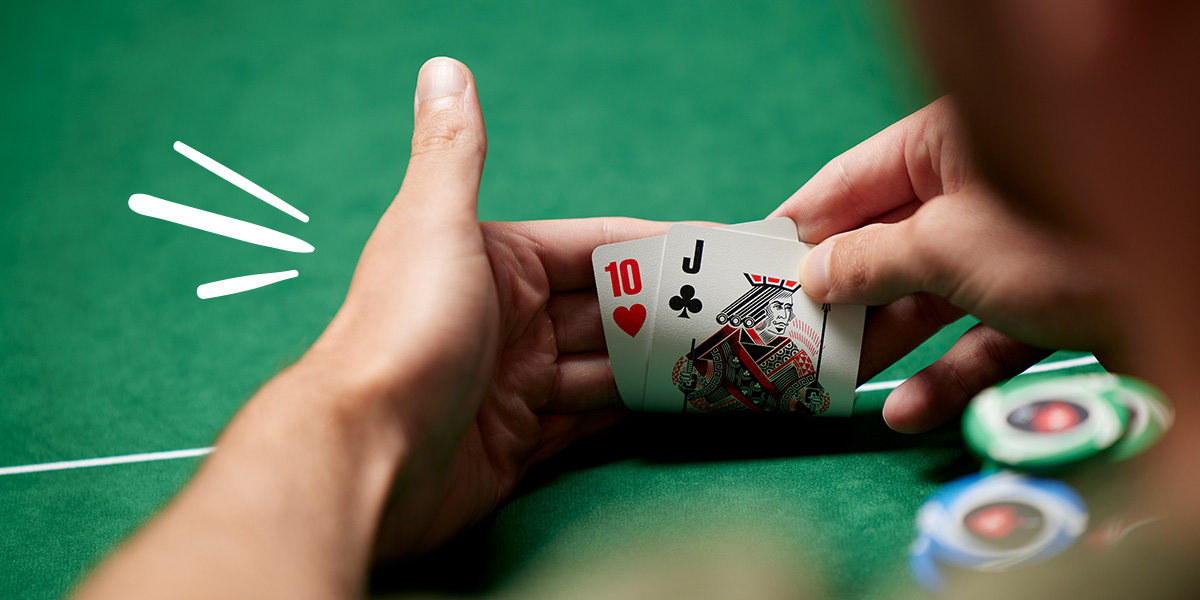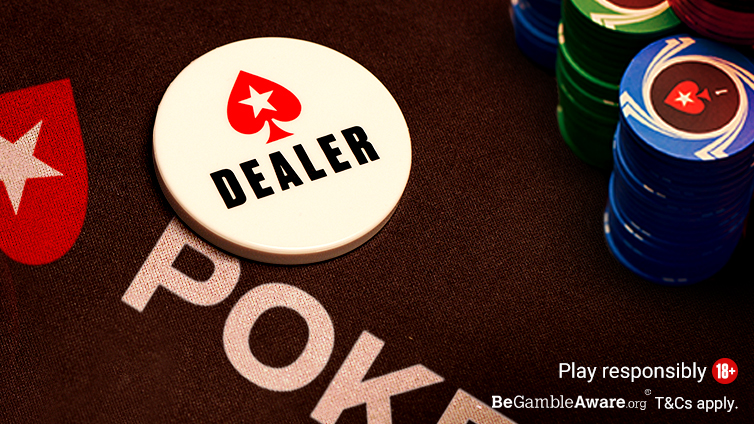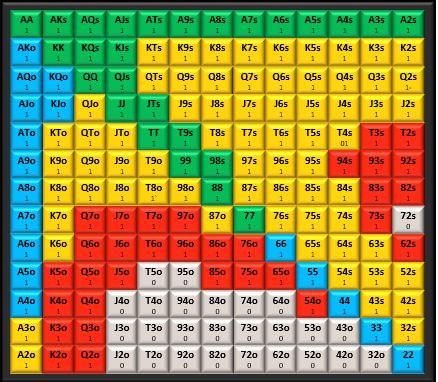Table of Contents
The poker lexicon is full of cool expressions. You tell a non-poker player that you “triple-barrel bluffed’ or “check-raised with the nuts” and you’re sure to pique their interest.
Limping, however, is almost certainly the least cool-sounding word in all of poker’s lingo. But it’s also fitting, as limping is often viewed as an uncool move to make.
But what exactly is limping in poker? And is limping ever a good idea?
Consider this article your ultimate guide to limping. You’ll learn the meaning of limping in poker, whether or not it’s a good technique, and the situations in poker tournaments where it’s not only worthwhile but crucial to have a limping strategy.
WHAT IS LIMPING IN POKER?
Limping in poker is when a player enters a pot by matching the amount of the big blind, rather than raising it. For example, if the blinds are 50/100 and the under-the-gun player puts down a 100 chip, they have ‘limped in’.
If you’ve ever played live poker before, be it at a casino or in a home game, you’re probably used to seeing this – from all positions. It’s a very common move at low stakes (even in online poker) as players in these games love to see flops and want to reach them as cheaply as possible.
At bigger stakes, however, limping is far less common. If a player enters the pot it’s usually with a raise, as this is an aggressive action rather than a passive one and gives them a chance to either win the pot there and then, or begin to build a pot they can win later.
Limping is solely a pre-flop action, as this is the only time in a hand when a player can enter a pot by calling only the amount of the big blind.
Limp poker is most common from the small blind position when all other players have folded before you. However, calling the big blind from the small blind (i.e., putting in an additional half a big blind) is often called “completing” rather than limping.
IS LIMPING GOOD IN POKER?
For much of poker’s modern era, limping was not only an unpopular play but widely criticised. In fact, for many years, if you saw a player limp in rather than raise pre-flop you’d probably assume they were a fish.
But while it’s still more common and theoretically sound to raise pre-flop rather than limp, today’s poker learning tools show us there are actually many situations where it’s not only OK to limp in, but it’s game theory optimal (GTO).
The answer to the question ‘Is limping good in poker?’ is therefore…it depends. It depends on your stack size. It depends on your opponents’ stack sizes. It depends on your position at the time. Sometimes it depends on the tournament format.

LIMPING INSTEAD OF RAISING
Let’s have a look through some situations where you should definitely consider limping instead of raising.
Small blind completes
This first situation is the most common of them all and technically isn’t even considered a limp, but rather a ‘complete’.
It’s when the action folds around to you in the small blind and you simply complete the big blind (i.e., add the other half of a blind). Essentially, you’re calling the blind and giving the player in the big blind position a decision to make: either check or raise.
For a long time, poker coaches advocated for a ‘raise or fold’ strategy from the small blind. The reasoning was that if your hand is good enough to call, you should raise it and try to take down the blinds and antes. If it’s not, just fold and save yourself from playing out of position post-flop.
But as strategies have become more sophisticated, it’s now clear that our small blind strategy should be more nuanced and mixed, making it more deceptive.
Let’s say it folds to us in the small blind and we’re 30 big blinds effective. While we still want to fold the junk hands (the worst offsuit combos, like nine-deuce and eight-three), we’re able to call (“limp”) with many starting hands (almost two-thirds) including every single suited hand.
Should the big blind raise, we can call and see a flop with the stronger hands in our range. If they check, we get to see a cheap flop with a super wide range that the big blind is going to have a tough time pinning down.
Raising to 3-4 big blinds is reserved for our strongest hands and bluffs – for example, big pocket pairs but also hands like king-five offsuit and jack-three suited that just want to get our opponent to fold.
Monster hand / Short stack / Early position
Here’s another situation where it not only makes sense to limp but is also solver-approved.
Let’s say you’re short-stacked with just 10 big blinds in early position and you’re dealt pocket aces.
Sure, you need a double-up to improve your chances in the tournament. But is moving all in the best way to get action?
No. Obviously, you should base your final decision on table dynamics: the stacks of your opponents, recent pots etc. But in theory, limping is the best move here.
It allows your opponents the space to put money in the pot, meaning you could more than double up if things go your way. After all, a limp often encourages limping behind, which in turn encourages players to raise in order to isolate or force everyone to fold.
Even if you end up going up heads-up to flop versus the big blind, you’re going to have the best hand post-flop most of the time.
Under the gun, you should also try limping with pocket kings too. But remember, you can also add weaker hands into your 10-big-blind limping range from early position, such as low-suited aces, king-jack offsuit and pocket fives.
Short stacked on the button
It’s not just from early position that you should consider limping when short-stacked (~10 big blinds).
The button is also a great position to limp as you really should have no raising range. It’s optimal to play a shove, limp or fold strategy off 10 bigs. But when your only raise size is to shove, you risk getting no action with your strongest hands.
By limping pocket aces, kings, queens, and even jacks, you can elicit action from the players in the blinds. If they don’t raise, you either get to see a cheap flop with a weakish hand (king-eight offsuit, for example) or play in position with your strongest.

Covering stacks in PKOs
This next situation is one you see frequently in Progressive Knockout (PKO) tournaments, at all stakes.
In PKO tournaments, all players have bounties on their heads that are eventually awarded to whoever knocks them out. The more bounties you win, the larger your own bounty becomes.
When you have the biggest stack at your table in a PKO tournament, you’re in a very powerful position. You can eliminate every player at the table and win their bounty, whereas they can’t win yours, which discourages players from tangling in big pots against you.
Now, when there’s a short-stacked player at the table – particularly one with a large bounty on their head – it’s common to see the big stack limp. This is because they want to see flops cheaply versus the short-stacked player or put pressure on other limpers by setting them all in should the short-stack player shove.
If your stack is big enough you can limp like this with your full range of hands, although it’s still definitely recommended that you open-raise with your strongest hands often.
Over-limping
The final situation we’re going to mention isn’t the most exciting, but it can lead to some very interesting situations.
If one or more players before you limp in, you could also limp. This is called over-limping.
Players do this for a variety of reasons:
- To see a cheap flop with a hand they would have folded to a raise
- They get good pot odds and can comfortably fold should anyone raise behind
- They can trap with big hands and back-raise if a player behind raises
The latter of those points is particularly effective in PKO tournaments when there are short stacks behind you.
When you limp, you don’t show strength. So not only might you see the short-stacked player raise or even shove, but you could also see one of the initial limpers move all in over the top in a bid to isolate the all-in player.
If you’re sitting there with pocket kings, this is music to your ears.
BUILDING A LIMPING STRATEGY
As it’s the most frequent situation where you’ll limp in, let’s consider what hands you want to do this with from the small blind.
Limp/Call with Playable Hands
Cute and versatile hands like jack-ten suited and queen-nine suited fit perfectly into a limp/calling range if our opponent makes a 3.5x raise from the big blind (a normal size in this spot.)
These hands dominate the total trash that they will be checking, so they have good implied odds from the prospect of flopping a better pair than our opponent.
Moreover, they are very live against some of the hands our opponent might value raise and are crushing some of their bluffs. As we’ll see in the next point, the big blind should play a polarised strategy in response to our limp (meaning they’ll raise very good hands and bluffs but not medium hands that flop well.)
Limp the Absolute Nuts
When deep-stacked, you should always raise from the small blind with your very best hands (big pocket pairs and ace-kings) as you want to begin to build a pot there and then. When short-stacked, however, you can also consider limping. These hands do not crave the protection and fold equity that a hand like ace-jack offsuit or pocket fives. Therefore, we can choose to play these hands as limps – the protectors of what is otherwise a pretty capped range.
When we have a huge pair or massive suited hand, our equity is so high and our playability so pleasant that we can do very well both by limp/shoving and by just seeing a flop versus a much weaker hand. We will invariably be limp/jamming these hands if we face a raise and limp/calling them to a jam from our opponent.
Scrape into the Pot with Semi-Trash
Hands like J6o are far from the worst stuff on the menu, but certainly quite junky. When there is just one opponent left and the pot odds for completing in the small blind are so good, they are not foldable, but we would also prefer not to raise with them. This is another bonus to playing a limping strategy as opposed to a raising one.
By limping, you get to play more hands that would have to fold in a raise or fold strategy.
Let’s Meet the Strategy
Now that we understand the theory behind small blind play, let’s meet the range we’ll be using. As always, it is your job to adapt this as you see fit. For example, you will want to limp more of the folding hands against a very passive opponent and limp more of the shoving hands against overzealous raisers.
These ranges assume equal stacks. You have the chance to stack your opponent and earn his bounty. If this is not the case, you have to tighten up a bit. If you cover him and only his bounty is in play, you can loosen up more.

In the range chart above:
- Grey hands are folds
- Red hands are limp/folds
- Yellow hands are limp/calls
- Green hands are limp/jams
- Blue hands are straight up jams












